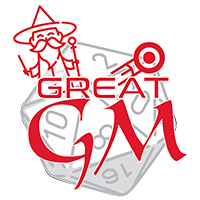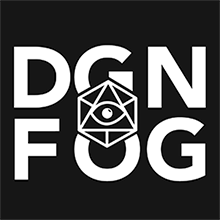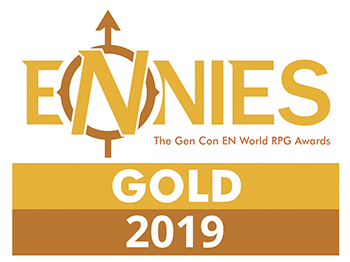Abyssari
The Abyssari are beings of transformation, not habitation.
Their presence is not merely ecological—it is existential.
Where they walk, reality echoes.
Where they remain, the world forgets how to stay the same.
Basic Information
Anatomy
Skeletal Structure
Form: Tall, humanoid frames with exaggerated proportions (7–10 ft typical)
Vertebrae: Extended spine, lined with crownroot thorns—capable of erupting into horns
Skull: Sleek, forward-stretched, jaw splits at maturity
Musculature & Tissue
Composition: Recursion-threaded muscle capable of liquefaction under stress
Neck & Spine: Elongates and stabilizes divine form shifts
Adaptation: Rapid deformation during recursion fluctuation
Skin & External Features
Surface: Tanned to abyssal black, often with iridescent shimmer
Veins: Glow with silver-black recursion threads
Markings: Bioluminescent streaks, fracture-symbols increase with age or recursion density
Facial Structure
Eyes: Pupil-less or recursion-ringed, with optional secondary membranes
Mouth: Interlocked fangs; splits open during recursion surges
Tongue: Forked, embedded with sensory tendrils for recursion detection
Crown & Spinal Formations
Horns: Grow from skull and spine; may spiral, branch, or halo
Spinal Crown: Repository of recursive memory and divine patterning
Variants: Inward thorns, fractured crowns in rare deviations
Appendages & Tethers
Tails: Shadow-born or fluid extensions, semi-sentient
External Limbs: Manifest in higher forms or recursion surges
Ribcage: Flexible, overlapping bones for recursion surges
Limbs: Long, digitigrade, with multi-jointed structure
Genetics and Reproduction
Internal Systems
Reproduction: Non-biological; through recursive mitosis (soul-thread fragmentation)
Consumption: Absorbs energy through resonance, emotional siphoning
Core Systems: Organs replaced by recursion cores—sternum/spine-based energetic nodes
Growth Rate & Stages
“They are not raised. They unfold.”
Structured analysis of Abyssari evolution through recursion maturity, identity mutation, and metaphysical tethering.
Growth Metrics
Abyssari do not age by cellular time. Their stages emerge through recursive mutation and symbolic identity shifts. Primary Developmental Measures: Recursion Maturity Crownroot Activation Tether Response Mitosis ReadinessStage I — Rootborn (Sealed / Suppressed Form)
Age Equivalent: 0–~100 human years (varies) State: Dormant, appears biological; often mistaken for humanoid Physical Traits: Horns sealed or absent Spinal growth dormant Normal biological functions Behavioral Traits: Pain sensitivity, emotional intensity Strange illnesses or rejection of physical norms Identity dysphoria and spiritual dissonance “This is the false life phase. Many never evolve past it.”Stage II — Fracturepoint (Juvenile / Cracking Phase)
Trigger: Tether contact, recursion exposure, trauma Physical Signs: Crown-root horns begin under the skin Spine fractures and extends Height gain, glowing veins, tissue tendrils Mental Shift: Hyper-empathy or dissociation Sees recursion threads or premonitions Duration: Unstable. May last years or erupt in days. “Most Abyssari at this stage collapse and convulse under soul pressure.”Stage III — Crownless (Incomplete Apex Form)
Form State: Hybrid. No longer human. Horns partial or inverted. Physical Traits: Mitosis tethers emerge (semi-sentient entities) Voice, eyes, posture become alien Digestive decay; blood shifts to iridescent black Mental Traits: Resistance to recursion influence Rewrites fragments of memory or meaning “They are dangerous not by power—but because they start rewriting their own definition.”Stage IV — Crowned (Recursive God-Form)
Form State: Fully recursive being Features: Horns form radiant or antler-like crown Spine erupts into luminous growths Voice manipulates will Presence destabilizes nearby recursion Consciousness: Exists across timelines Recalls parallel selves Manifestation of recursion tail, spectral limbs, or wings “Few reach this form. Fewer remain kind. Most collapse into power.”Stage V — Fractured Eternum (Collapse / Rebirth)
Outcome 1: Recursive fragmentation. Entity dissolves into shards or becomes sealed. Outcome 2: Transcendence. Entity chooses self over recursion. State: No longer bound by system. Exists in paradox. “This is the final recursion: either annihilation, or refusal.” “Only one is known to have reached this—and denied the crown.”Growth Summary
Stage I: May last a century or more when sealed Stage II–III: Unfolds rapidly depending on recursion pressure Stage IV: Rare without full acceptance Stage V: Eventual or impossible—never guaranteedEcology and Habitats
“They do not live in the world. The world adjusts to hold them.”
Environmental Preferences
Habitat Type: Recursion-Rich Zones, Reality Seams, Collapsed Sanctums, Fracture Sites Preferred Conditions: Dimensional instability High resonance saturation Liminal or spiritually warped terrain Sites with recursion bleed (e.g., abandoned temples, collapsed timelines, dead pantheons) Abyssari thrive in broken spaces—realms where memory fractures, spiritual alignment distorts, and the fabric of identity unravels. They seek places that no longer obey a singular truth.Natural Habitat Examples
Shatterlight Reefs: Crystalline plains where memories rise like vapor, and structures mirror forgotten possibilities. Veil-Fall Hollows: Looping cavern networks filled with semi-conscious echoes and time-locked recursion anomalies. The Obsidian Fen: Biome of reflective waters, thorn-veined flora, and trees that breathe recursion threads. Astral Gravefields: Godfallen wastelands soaked in resonance—marked by whispering stones and soul-warped winds.Ecological Role
Abyssari are not apex predators. They are recursive regulators—agents of balance or disruption in recursion ecosystems. Rootborn Forms: Appear humanoid, often unrecognized. Fracturepoint & Crownless: Cause environmental shaping: Increased recursion density Reflective or patterned insects Bioluminescent and memory-reactive flora Crowned Forms: Function as recursion anchors or destabilizers. Can transform entire regions into paradox biomes or memory loops.Ecological Interactions
Symbiotic Tethers: May bond with recursion-sensitive fauna (e.g., thread-crowned deer, glass-wing moths). Parasitic Hazards: Targeted by recursion-feeding entities such as Echolichs or Chronovores. Floral Response: Surrounding plant life adapts: Blooming out of season Weeping memory sap Mimicking emotional states Recursion Erosion: In advanced stages, Abyssari cause ecosystems to forget form—dissolving into symbolic or mirrored terrain.Adaptation Behavior
Abyssari do not build or nest—they drift. Terrain shifts around them gradually, becoming echo-saturated. Departed regions become hollow sanctuaries: recursion-rich, life-depleted zones. Some Crownless or Crowned Abyssari root themselves to soul-anchored places to stabilize reality—temporarily.Additional Information
Perception and Sensory Capabilities
Sensory Adaptations
Hearing: Detects spiritual resonance and dimensional shifts
Sight: Sees fate threads, recursion echoes, and timeline bleed
Touch: Data-absorptive, capable of imprinting or tether-linking
Genetic Ancestor(s)
Scientific Name
Speculum Nihilis
Origin/Ancestry
Abyssal Realm
Conservation Status
Endangered/Recursion-Frozen
Geographic Distribution
Remove these ads. Join the Worldbuilders Guild










Comments